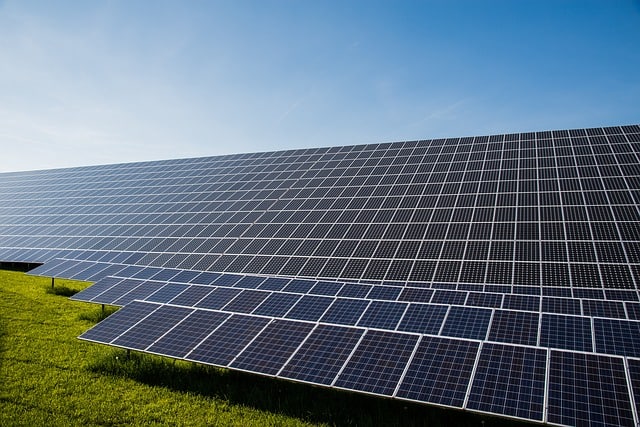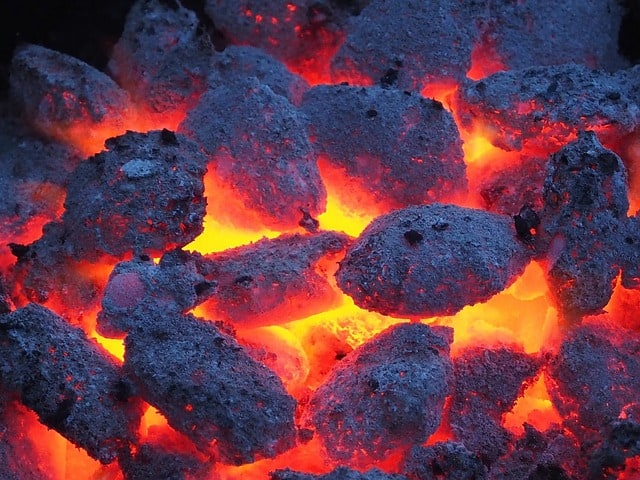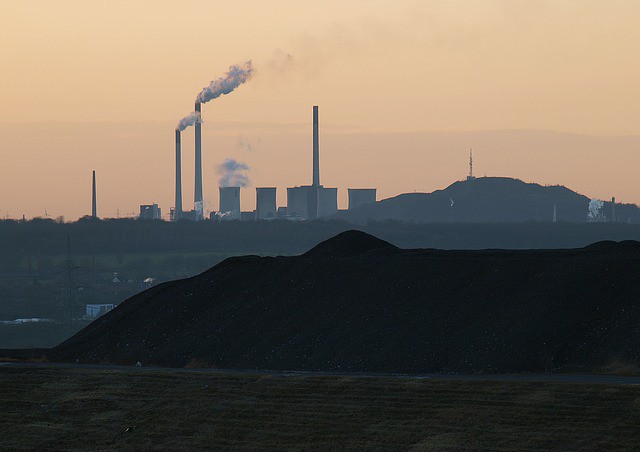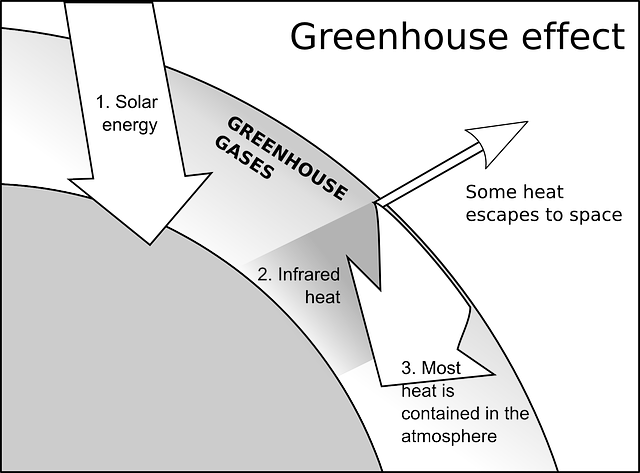What are Renewable and Non-Renewable Energy Resources With Various Examples

Renewable Energy, also defined as alternative energy derived from replenishable resources. The resources could be sun (solar energy), wind (wind energy), rivers (producing hydroelectric energy), hot springs (geothermal energy), tides (tidal power) as well as biomass (biofuels). Renewable energy resources constitute almost 20 percent of global energy consumption, as recorded at the beginning of the 21st century.
Solar Energy
Solar energy is usually derived by capturing the ultraviolet solar rays, which is functionally considered as endless and then converting it to electricity, heat, or hot water. The photovoltaic system (PV) causes the direct conversion of sunlight to electricity with the help of solar cells.
The benefit underlying this process is that the sunlight is literary endless, and it has the capacity to render the fossil fuels obsolete. It would reduce the cost of electricity to manifolds and, of course, improve public health, and other environmental conditions. Nowadays, with the growing climate crisis, the governments of various counties started announcing tax rebates on solar energy investment to help promote the use of renewables among the masses.
Wind Energy
For wind farms, it’s possible to trap the wind energy by the moving turbines and then convert to electricity for use in households and industries. Wind power generating systems, therefore, can be utilized to run various organizations meeting their day-to-day electricity needs.
The primary advantage of using wind energy is that wind is a source of clean energy and doesn’t release any toxic by-products that tend to harm the environment. Moreover, utilizing wind energy is cost-effective, and it can also generate employment.
Water or Hydro Energy
It is primarily harnessing of fast-moving and falling waterbodies to facilitate various useful purposes. People construct dams that are essentially meant to trap the hydropower, which can be converted to electrical power and can aid in supplying electricity to millions of households and industries.
The prime benefit is that hydroelectricity hardly produces any pollution. It also proved to be a much more environment-friendly option than other contemporary energy resources.
Geothermal Energy
The heat produced underneath the earth’s crust can be trapped and then utilized in operating a turbine. Sometimes, the earth’s crust produces heat resulting from radioactive decay and volcanic eruption that escapes naturally. When the heat is captured from the flowing steam, it could be converted to usable energy.
Here the advantage is that the conversion of energy occurs underground without much effect on the life above the ground.
Ocean Energy
Oceans are known to produce two types of energy – mechanical and thermal. Thermal energy is generally produced through the warm water surface while the mechanical energy is produced through the ebbs and tides at the ocean surface.
The strength of generating ocean energy is that it’s a predictable measure. The potential of wave energy is astounding and has the ability to electrify millions of houses. This makes it easier to harness energy for the local population inhabiting near the ocean region.
Hydrogen Energy
When hydrogen is separated from another element, it can be used to produce fuel (when burned with oxygen) and electricity. It finds its usage in commercial vehicles as a fuel cell, and also for batteries powering electric motors.
The advantage lies in the fact that hydrogen can be used as a clean fuel, thereby generating lesser pollution and, of course, supports a cleaner environment.
Biomass Energy
The energy derived from the decomposition of biomass(animal or plant materials) can be used for the production of mechanical and electrical energy and in different industrial processes. Biomass gas can be naturally obtained from decaying and decomposing plant and animal masses.
The plus point of this process is that plants, too, can utilize the carbon dioxide produced by the burning of biomasses. It thus creates a balance of the environment leading to cleaner surroundings. Besides, the energy produced by methane and ethanol is used in households for various purposes.
What are Non-Renewable Energy Resources?
Non-Renewable Energy is defined as the energy derived from those resources that will exhaust someday. Most of the resources are the ones that can be obtained from underneath the earth’s crust. They are generally obtained 300-350 million years before when the earth’s crust carbonized from the living remains of plants and animals.
How Was the Fossil Fuel Formed?
About 300-360 million years ago, when the dinosaurs ruled the earth, there were planktons, algae living in the ancient wetlands. When these organisms died, their masses sank to the lower strata of the wetlands, and the rocks stratified over them, which resulted in the formation of coal, petroleum and natural gases in huge underground pockets called reservoirs.
The various non-renewable sources of energy are discussed below.
Coal
Black or brownish combustible rocks are known as coal, which got transformed as a result of carbonization. It is chiefly a compound of carbon, hydrogen, oxygen, nitrogen, and sulfur. The anthracite and peat are various forms of coal. As we all know, most of the electricity supply of the world comes from the burning of coal. The by-products obtained from burning coal are used in the cement, plastic, road construction, and other industries.
Although coal is the most reliable form of energy resource, readily available for electricity production, the burning of coal produces carbon dioxide, which proves immensely harmful for living beings and the environment.
Petroleum
The yellowish-black, naturally occurring liquid found in underground rock formations of the earth is called petroleum. Also known as crude oil, it generally gets extracted from the ocean, and it is refined and then used for the production of transport fuel. Gasoline, a converted form of petroleum, is generally used for water pipes, shoes, roofing, vitamin capsules, cosmetics, and various other products.
Gasoline is portable and can be easily carried anywhere through pipes. Oil drilling is also relatively inexpensive and provides employment for the community. However, burning petroleum can be lethal for flora and fauna. Oil, when spilled over the ocean water, can prove to be devastating for marine life.
Natural Gas
Commonly known as fossil gas, it is primarily a hydrocarbon gas consisting of methane. Methane, which is also a powerful greenhouse gas, smells like rotten eggs and generally used for electricity generation, heating and cooking. Methane can be converted to a liquid form, LNG, which is used as a replacement for gasoline.
The benefit of using natural gas is that they are a cleaner form than crude oil or coal. Burning natural gas, though, releases carbon dioxide and water, which is a healthier option compared to burning coal. However, extracting natural gas can cause environmental problems, causing fracturing and mini earthquakes.
Nuclear Energy
Nuclear Energy, as a non-renewable source, is a costlier way of extracting electricity all over the world. They can be used in the field of agriculture, food, space exploration, medical fields, and water desalination.
Harvesting nuclear energy can be difficult as it involves a skilled workforce. Radioactive waste, obtained from nuclear energy, can be extremely toxic, causing burns and has increased chances of causing cancer, blood disease, and bone decay.
Why are Renewable Energy Resources Preferred Over Non-Renewable Ones?
Although there are various challenges, the world is steadily shifting to using renewable energy resources from their dependence on non-renewable energy resources. There are various reasons for it.
- Sooner or later, fossil fuels will be depleted one day, with no more remains of fuel, which will bring the world to a standstill position.
- Non-Renewable energy resource leaves behind many adverse factors, including health issues, environmental degradation, and triggering various ailments affecting flora and fauna. It may result in an ecological imbalance causing severe harm to our environment.
- Obtaining renewable energy resources can be comparatively inexpensive, and the chances of depletion are almost zero.
- The greenhouse gas emission on using renewable energy resources is considerably much lower, thereby leading to a decreased effect on global warming.
- Although extracting renewable energy resources is an expensive process, the world is continuously looking for cost-effective alternatives for curtailing its operational costs.
The reasons mentioned above are some of the various reasons why the world today prefers renewable energy resources to non-renewable ones. With that said, we must also understand the fact that using 100% renewable energy to meet global demand cannot be possible as it’s dependent on weather and environmental conditions.






